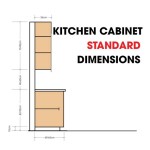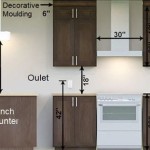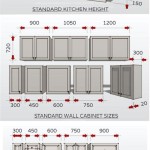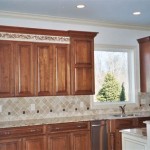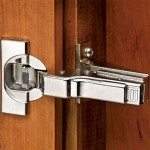How Level Do Kitchen Cabinets Need To Be For Granite Countertops?
Granite countertops are a popular choice for kitchen renovations due to their durability, beauty, and potential to increase home value. However, a successful granite countertop installation relies heavily on a properly prepared foundation. The levelness of the base cabinets is crucial for ensuring the granite sits evenly, preventing cracks, and achieving a professional finish. Understanding the required levelness and the methods to achieve it is essential for a successful installation.
The industry standard for cabinet levelness for granite countertops is within 1/8" over a 10-foot span. This tolerance ensures the granite slabs, which are typically heavy and rigid, are supported evenly across their entire surface. Exceeding this tolerance can lead to several problems, including stress fractures in the granite, uneven seams, and difficulties in achieving a proper seal around the countertop perimeter. Furthermore, an uneven surface can make everyday tasks like placing items on the counter unstable and potentially hazardous.
Assessing the levelness of the base cabinets is the first step in preparing for granite countertop installation. A long, straight level (at least 4 feet long is recommended) is the primary tool for this task. The level should be placed across the front-to-back span of the cabinets and then along the side-to-side span. This process needs to be repeated at various points along the length of the cabinetry. Careful attention should be paid to corners and joints where cabinets meet, as these areas are prone to discrepancies.
If the cabinets are found to be out of level, several methods can be employed to rectify the situation. Shimming is the most common technique for minor adjustments. Shims are thin, tapered pieces of wood or composite material that are placed beneath the cabinets to raise low spots. They are available in various thicknesses to allow for precise leveling. When shimming, it's essential to use high-quality shims that are resistant to compression and moisture. Improper shimming can lead to settling over time and ultimately negate the leveling efforts.
For more significant leveling issues, it might be necessary to adjust the cabinet base itself. This often involves accessing the cabinets from below and adjusting the leveling feet or screws that are typically found on most modern cabinets. This method requires more effort and may necessitate removing some cabinet toe kicks or panels for access. It's crucial to ensure all cabinet screws are securely tightened after any adjustments are made to maintain stability.
In some cases, especially with older or uneven floors, it may be necessary to add a layer of plywood sub-top to the cabinets before installing the granite. This plywood provides a stable and level surface for the granite, effectively bridging any minor inconsistencies in the cabinets below. The plywood should be at least ¾" thick and securely fastened to the cabinets. This approach adds another layer of protection and support, especially when dealing with thinner granite slabs.
Once the cabinets are leveled, it's important to reinforce their structure. Granite countertops are incredibly heavy, and over time, the weight can cause even slightly unlevel cabinets to shift. Adding additional bracing or supports, especially in areas with overhangs or seams, can help prevent this from happening. Consult with a qualified contractor or installer to determine the best bracing strategy for your specific installation.
Ensuring the cabinets are level is just one aspect of preparing for a granite countertop installation. The cabinets must also be sturdy and securely fastened to the wall and floor. Any movement or instability in the cabinet structure can transfer to the granite, potentially leading to cracking or other damage. A thorough inspection of the entire cabinet structure should be conducted before the granite is installed.
The installation of granite countertops is a complex process that should be handled by experienced professionals. While understanding the leveling requirements and methods can be beneficial, attempting the installation without proper training and equipment can lead to costly mistakes. A professional installer will possess the necessary tools and expertise to ensure the countertops are installed correctly and to the highest standards.
Proper preparation is the key to a successful granite countertop installation. By ensuring the cabinets are level, stable, and properly supported, homeowners can enjoy the beauty and durability of their new countertops for years to come. Investing the time and effort in proper preparation is a worthwhile investment that will pay off in the long run.
Finally, choosing the right granite slab is another crucial step. Different granite types have varying porosity and density levels, influencing their susceptibility to cracking or staining. Consulting with a professional about the best granite choice for your specific needs and usage patterns is recommended.
Leveling Up Stone Countertops Jlc

How To Prepare Cabinets For Granite Countertops Right Way Rsk Marble
Leveling Up Stone Countertops Jlc

How To Prepare Kitchen Cabinets For Granite Stone Countertops Marble Com

Installing Countertops On Uneven Base Cabinets
Leveling Up Stone Countertops Jlc

How To Prepare Cabinets For Granite Countertops Right Way Rsk Marble

Can I Install A Granite Countertop In Kitchen With An Uneven Floor Scott Hall Remodeling
Leveling Up Stone Countertops Jlc

Granite Or Quartz Countertop Templating Process
Related Posts


